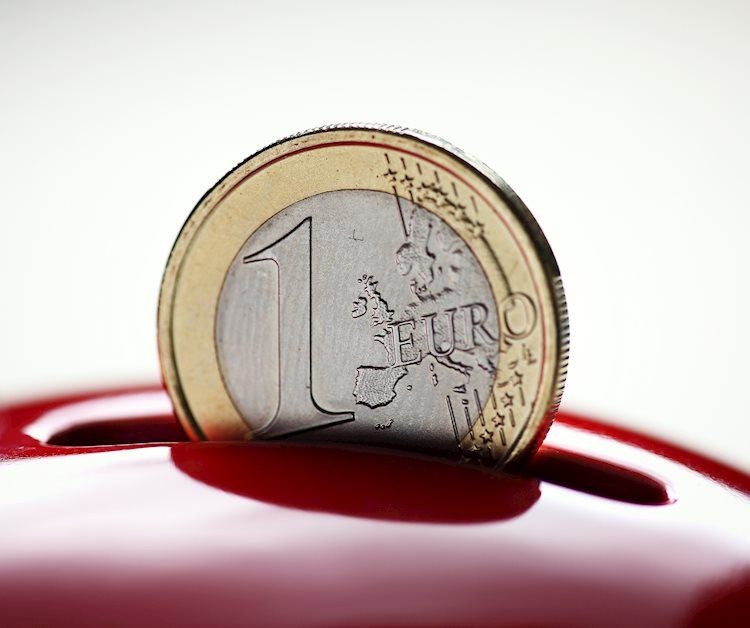
- EUR/USD saw little momentum in thin Wednesday action.
- European economic data continues to soften.
- Friday’s Germany HICP inflation to be key release this week.
EUR/USD saw a thin grind higher on Wednesday before a late break to the downside in the US market session followed by a slim recovery into the day’s mid-range. The pair tested back into familiar territory near 1.0750 after touching a minor intraday high of 1.0784.
European economic figures continue to soften, with multiple mid-week prints missing expectations. Rate cut seekers will be keeping a close eye on Thursday’s European Central Bank (ECB) Economic Bulletin for clues about how close the ECB is to giving markets a rate cut after rates in the euro area hit their current peak last September.
- Germany’s MoM Industrial Production declined more than expected in December, printing -1.6% versus the forecast -0.4%. November’s -0.7% saw an upside revision to -0.2%.
- The ECB’s latest Economic Bulletin is slated for release at 09:00 GMT on Thursday.
- ECB’s Elderson, Lane also slated to speak on Thursday.
- Germany’s annualized Harmonized Index of Consumer Prices (HICP) inflation due Friday will be a key data print for the Euro (EUR) this week.
- Germany’s HICP inflation is forecast to hold steady at 3.1% for the year ended January.
- Federal Reserve (Fed) of Minneapolis President Neel Kashkari reaffirms Fed’s rate cut assessment for 2024, sees only 2 or 3 rate cuts through the end of the year.
- Fed’s Kashkari reiterates the need to be patient and take the time to assess data before the Fed makes any cuts.
- Fed Board of Governors member Adriana D. Kugler noted on Wednesday that inflation is progressing in-line with the Fed’s goals, but there’s still more work to be done.
- Fed’s Kugler: remains optimistic on inflation, sees rate cuts as long as price growth continues to recede.
- Fed’s Kugler warns that still-high consumption poses a threat to progress on disinflation as spending remains an elevated contribution to Gross Domestic Product (GDP) growth in the fourth quarter.
Euro price today
The table below shows the percentage change of Euro (EUR) against listed major currencies today. Euro was the strongest against the Swiss Franc.
| USD | EUR | GBP | CAD | AUD | JPY | NZD | CHF | |
| USD | -0.13% | -0.17% | -0.11% | 0.09% | 0.13% | -0.16% | 0.38% | |
| EUR | 0.10% | -0.05% | 0.02% | 0.22% | 0.25% | -0.04% | 0.49% | |
| GBP | 0.17% | 0.04% | 0.06% | 0.27% | 0.30% | 0.01% | 0.56% | |
| CAD | 0.12% | -0.01% | -0.06% | 0.21% | 0.24% | -0.05% | 0.47% | |
| AUD | -0.09% | -0.22% | -0.27% | -0.20% | 0.03% | -0.26% | 0.29% | |
| JPY | -0.14% | -0.23% | -0.29% | -0.25% | -0.02% | -0.29% | 0.22% | |
| NZD | 0.15% | 0.04% | -0.03% | 0.04% | 0.25% | 0.27% | 0.54% | |
| CHF | -0.39% | -0.51% | -0.55% | -0.49% | -0.26% | -0.25% | -0.54% |
The heat map shows percentage changes of major currencies against each other. The base currency is picked from the left column, while the quote currency is picked from the top row. For example, if you pick the Euro from the left column and move along the horizontal line to the Japanese Yen, the percentage change displayed in the box will represent EUR (base)/JPY (quote).
EUR/USD continues to trade on the south side of the 1.0800 handle in the mid-week, with the pair capped below the 200-hour Simple Moving Average (SMA) after getting rejected from the 1.0900 region last week.
EUR/USD continues to trade into the low side of a congestion zone between the 50-day and 200-day SMAs near 1.0900 and 1.0850 respectively, but downside momentum remains limited. The pair risks getting pulled back into consolidation above 1.0800 if sellers aren’t able to push the EUR/USD back under December’s low bids near 1.0725.
ECB FAQs
The European Central Bank (ECB) in Frankfurt, Germany, is the reserve bank for the Eurozone. The ECB sets interest rates and manages monetary policy for the region.
The ECB primary mandate is to maintain price stability, which means keeping inflation at around 2%. Its primary tool for achieving this is by raising or lowering interest rates. Relatively high interest rates will usually result in a stronger Euro and vice versa.
The ECB Governing Council makes monetary policy decisions at meetings held eight times a year. Decisions are made by heads of the Eurozone national banks and six permanent members, including the President of the ECB, Christine Lagarde.
In extreme situations, the European Central Bank can enact a policy tool called Quantitative Easing. QE is the process by which the ECB prints Euros and uses them to buy assets – usually government or corporate bonds – from banks and other financial institutions. QE usually results in a weaker Euro.
QE is a last resort when simply lowering interest rates is unlikely to achieve the objective of price stability. The ECB used it during the Great Financial Crisis in 2009-11, in 2015 when inflation remained stubbornly low, as well as during the covid pandemic.
Quantitative tightening (QT) is the reverse of QE. It is undertaken after QE when an economic recovery is underway and inflation starts rising. Whilst in QE the European Central Bank (ECB) purchases government and corporate bonds from financial institutions to provide them with liquidity, in QT the ECB stops buying more bonds, and stops reinvesting the principal maturing on the bonds it already holds. It is usually positive (or bullish) for the Euro.
